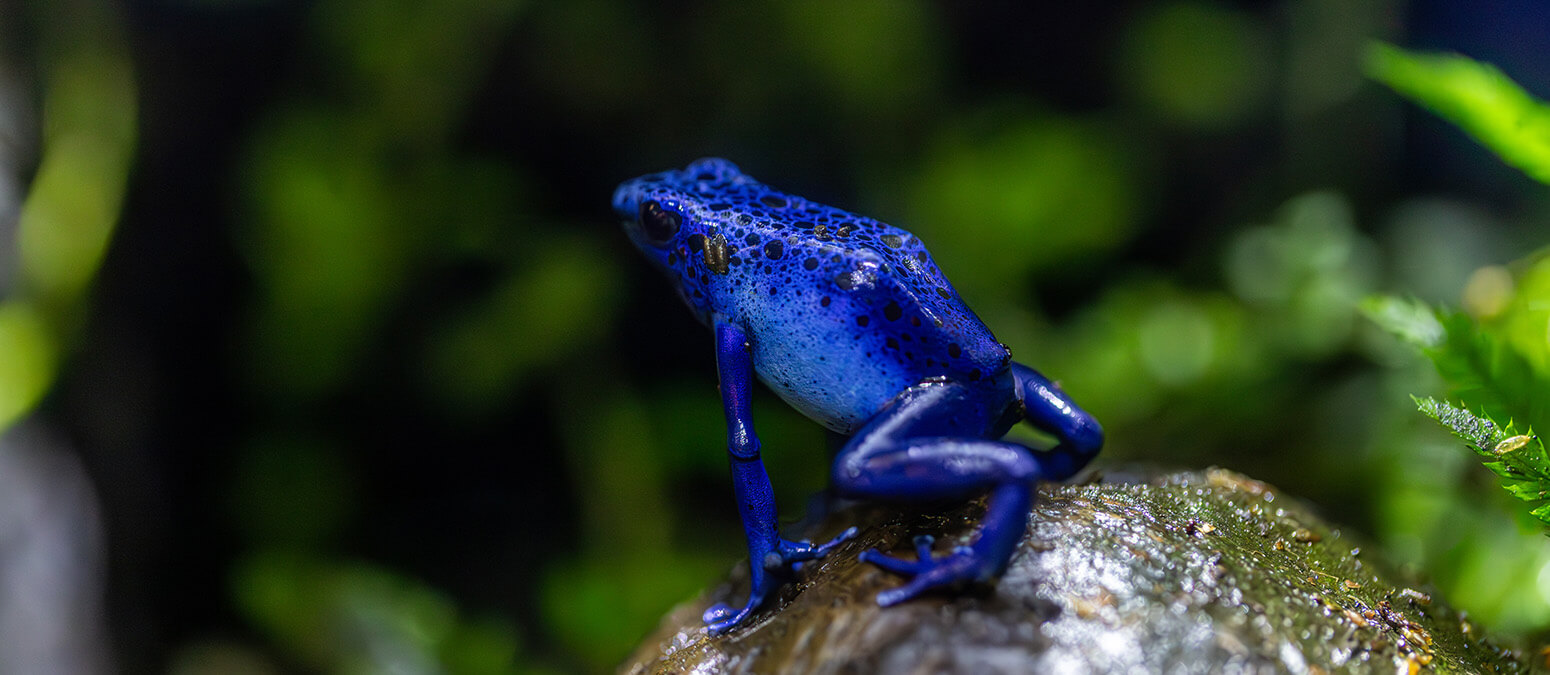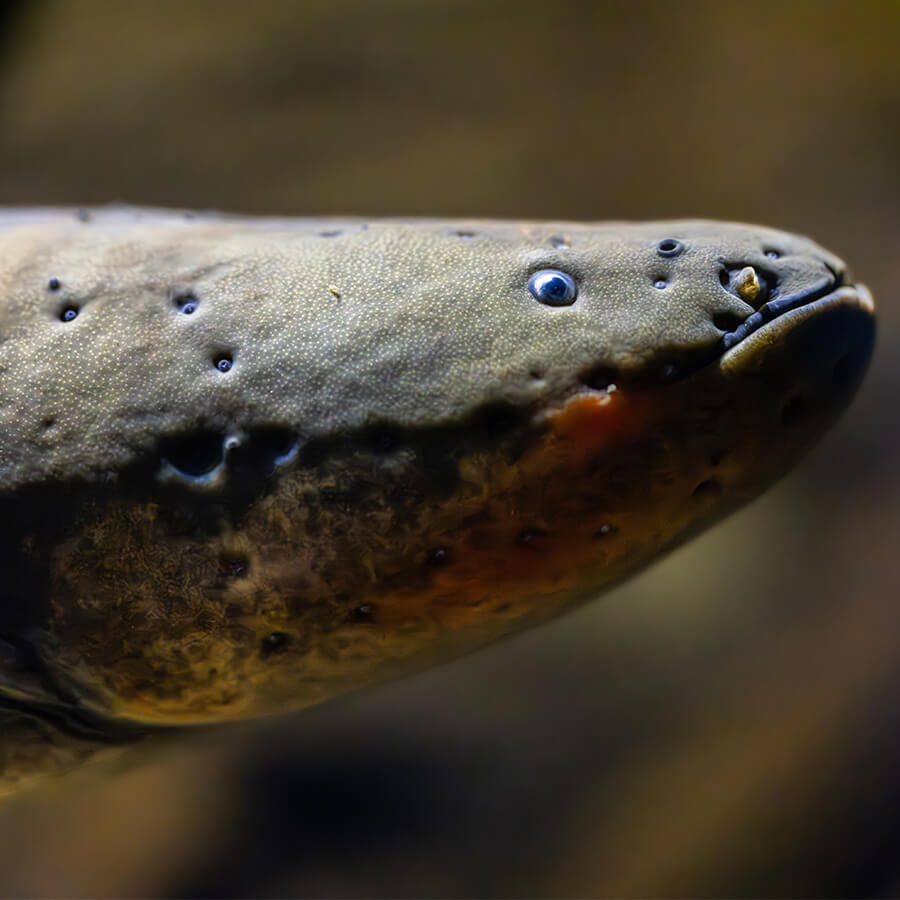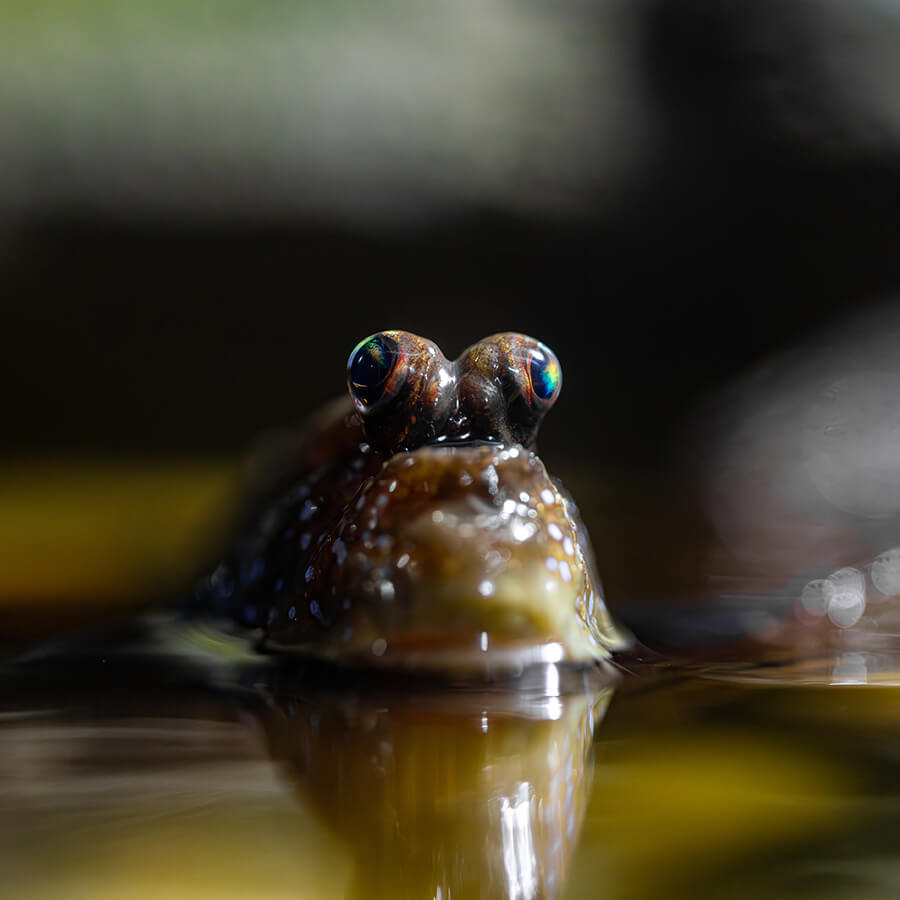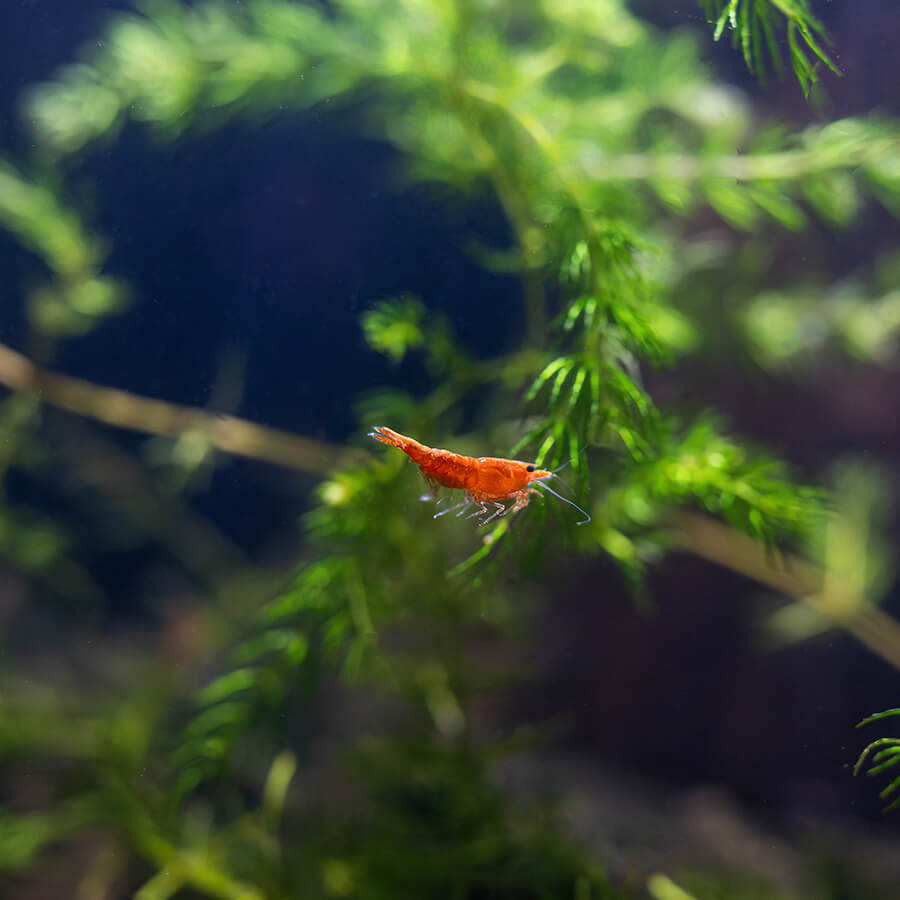
Animal Spotlight
Poison Dart Frog
Dendrobatidae
Bright, Bold & Toxic
While typically no larger than an inch, poison dart frogs make a big statement. An example of aposematic coloration, these frogs use their bold looks to warn predators about their toxicity. Their skin secretes a powerful poison called batrachotoxin, a neurotoxin that, if consumed, can cause health issues and even death. It’s believed they get it from the insects they eat in the wild, as those raised by humans on a diet of non-poisonous insects are not poisonous.
At over 175 species, these frogs are more at home climbing plants than swimming, thanks to toes with suction cups that help them grip leaves and branches. The name “poison dart frog” comes from the practice of local indigenous communities rubbing the frog’s poison on their arrowheads.
Meet the Neighbors
Poison dart frogs share their home in the MORPH’D gallery with an array of other species, from the popular electric eel to intriguing mudskippers, and peculiar paddlefish.

Electric Eel
With a long, snake-like body, electric eels are not considered true eels.

Mudskipper
Wonderful with some wild moves, these fish out of water are evolutionary wonders.

Paddlefish
Boneless, scaleless fish that can grow to be up to 7 feet long and weigh as much as 200 pounds.

Cherry Shrimp
Tiny social decapods with a knack for recycling and the ability to look good doing it.
Ready to Visit?
From the colorful to the camouflaged, the slightly slimy to the super smooth, each animal in MORPH’D presented by PAR® tells a story of survival.
